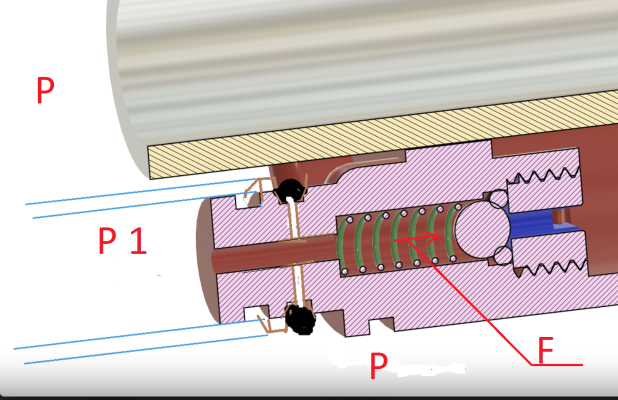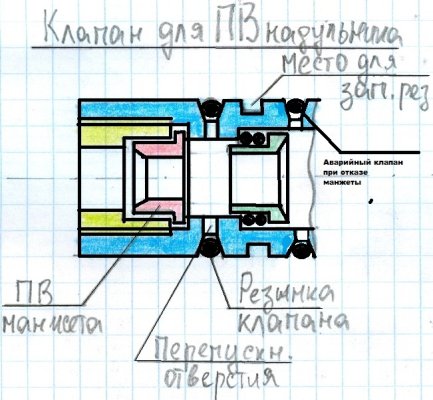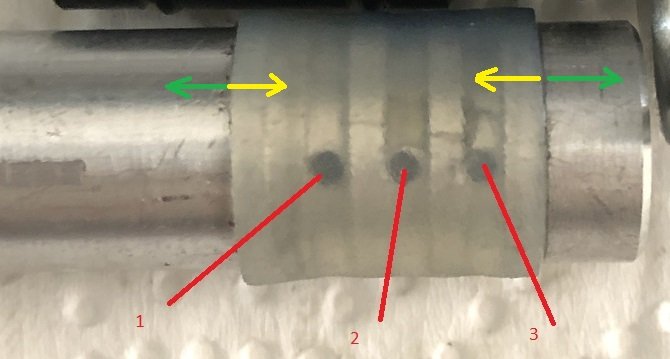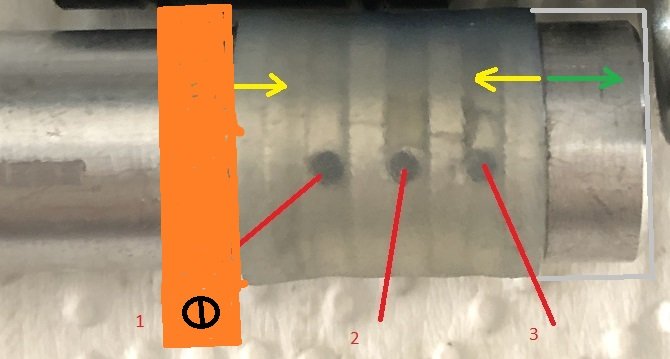One More (Little) Setback
I got my hands on a secondhand compressor so I can now pump the gun easily in the workshop. So, I took the gun up to 28 bar to test the pumping mechanism and it seemed the silicone sleeve valve on the pumping barrel was surviving. I had changed to a tubing with a slightly thicker wall and also polished the venting bores even more. But... then after a few tests of the pumping feature, it stopped working again!
So, I took the gun apart - easier mentally when you know it's easy to pump back up again

. And the sleeve looked fine. No holes in it this time.
A bit more disassembly revealed this though:
The o-ring on the power regulator bushing had split in half. This corresponds to me feeling that on the last failed round of tests, it was surprisingly harder to close the valve. The bore was chamfered as much as the geometry allowed it during the machining and then deburred with the grinder. But I went over it again:
Also spent a fair bit of time with diamond polishing pastes:
And smoothed the edges on the bushing, too:
When I assembled it again, there was a notable difference - the bushing inserts into the bore a whole lot easier now, so I hope this will solve the problem. It's designed for 25-27% compression so I think that part of the design is fine, just that there must have been a sharp edge that needed more rounding.
I know this is a little weird, but I think it's very fitting that I am using a Nikonos grease for this gun

. The Nikonos V underwater camera launched in 1984 and I'll have to look it up but I think the Mirage must have been around the same time.
I am using an o-ring as a spacer between the two barrels to get the spacing correct and another one to hold them together - this helps when I try to line up and slide the nose cone on during assembly:
I have drawn up a simple little bracket to do the same job. I may machine that some day but it's not a priority right now.
So, after this most recent, hopefully succesful fix, I took the gun back up to ~28 bar:
Then five pre-loading pump strokes and the pressure dropped to ~7 bar:
With four pumping strokes it drops to ~10 bar. I think that's pretty good territory to be in. Doesn't take long to do 4-5 strokes and cocking in the shooting barrel at 7-10 bar is easy

.
I went on to open the power regulator and then close it and do the pumping sequence again three times in total and nothing has broken so far. Last two times around, when the silicone sleeve got punctured both times it happened the first time I opened the valve. The power regulator closes easily too, now so maybe we are finally in the clear.
We may go spearing tomorrow, so that will be the real world test.
Finally, I also whipped together a new loader with a short extension:
Alu for the top whilst the lower handle is carbon, only for the simple reason that I had some

. The line is dyneema and then I have a bungee on it, too so I can easily put my hand through it and let it sit above my elbow when not in use.






